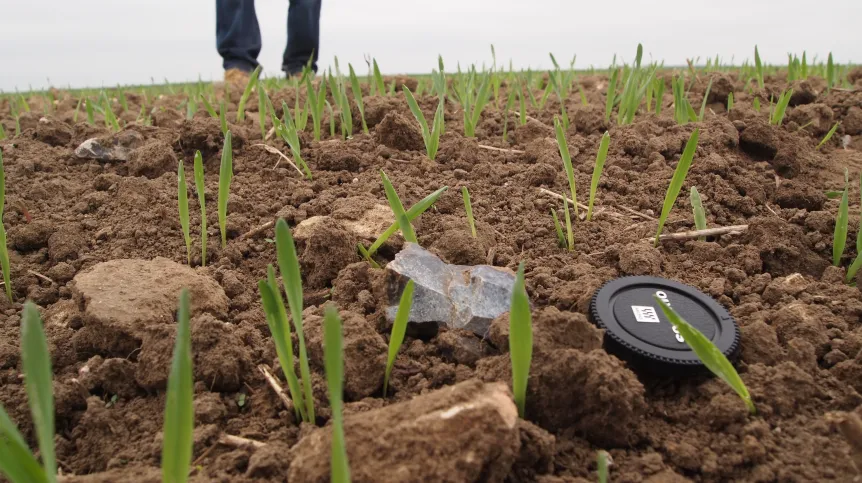
Chocolate flint mining site has been found in the Holy Cross Mountains by archaeologists from Cardinal Stefan Wyszyński University in Warsaw. Flint was used for making tools by the Lublin-Volyn culture population living in the area in the late fifth and fourth millennium BC.
Researchers from the Institute of Archaeology, Cardinal Stefan Wyszyński University in Warsaw have located the sight sought for years during the inventory of several other prehistoric mining sites in north-eastern part of the Holy Cross Mountains.
Chocolate flint outcrop extends over a nearly 100 km long, narrow strip from Zawichost in the Vistula valley to the area near Orońsko south of Radom.
"Historical material coming from the surface of the newly discovered site differs substantially from the other known sites of similar type. Contrary to previous assumptions, Lublin-Volyn culture population probably used relatively simple methods to mine secondary flint deposits" - explains the initiator of research, Dr. Janusz Budziszewski.
This community used the chocolate flint to make impressive tools, including flint daggers that, according to archaeologists, had a prestigious role. Specimens of these tools have been discovered recently in the course of the culture\'s unique burial ground in Książnice (read more here).
"Chocolate flint is extremely easy to work with, which in prehistoric times made it one of the most commonly used raw materials in the manufacture of small tools. It had been used since the appearance of people in our land, until the end of the Bronze Age" - explained Dr. Budziszewski.
The outcrop area has been very popular among archaeologists very popular among archaeologists for over 90 years. The first study in the area was initiated by geologist Jan Samsonowicz and archaeologist Stefan Krukowski in the early 1920s and continued for the next several years.
"As a result of these and further studies, the course of chocolate flint outcrops could be identified. Remains of more than twenty sites associated with prehistoric mining activity have been discovered" - said Budziszewski.
The current project is being carried out by the Institute of Archaeology of Cardinal Stefan Wyszyński University in Warsaw, under the programme "Cultural Heritage, Protection of Archaeological Sites", co-ordinated by the National Heritage Board of Poland
The initiative is being carried out with financial support of the Ministry of Culture and National Heritage as part of the task "Inventory of prehistoric flint mines in a variety of environments". Activities include documentation and inventory work in the central, best explored part of chocolate flint outcrops between Prędocin and Wierzbica.
"The area, although best explored, still has a lot of white spots. Majority of objects known to experts not only have not yet been recognized as historical monuments, they are not even recorded in the AZP documentation (Archeologiczne Zdjęcie Polski - Archaeological Picture of Poland, project aimed at mapping all archaeological sites in Poland - ed. PAP) and still are not subject to legal protection" - said Dr. Budziszewski.
Therefore, according to the archaeologist, the ongoing project involves an inventory of all prehistoric mining sites of the region and developing a strategy to protect them. Researchers are also planning to prepare the numerical model of the terrain with a laser (LIDAR), and aerial photography documentation. At few selected sites geophysical, GPR studies will be carried out.
In early May, in the first round of surface studies was completed. "Although the weather this year was not particularly favourable, the results proved to be quite successful" - believes Dr. Budziszewski.
PAP - Science and Scholarship in Poland
szz/ agt/ mrt/
tr. RL













